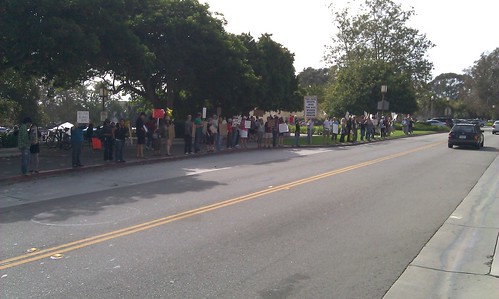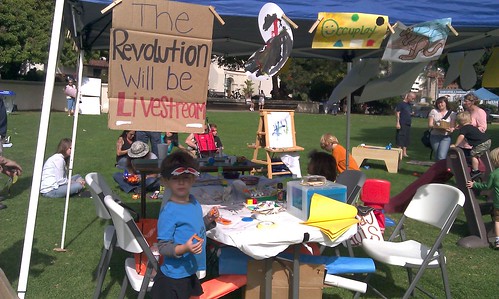It’s hard to say which has been more harmful to the body politic in this country: the extremist tilt of conservative Republicans, or the crowd of aloof both-sides-do-it anti-partisans who give them cover. Normally the latter are confined to the traditional media, who follow closely in the footsteps of their patron bipartisan saint David Broder. Conservative extremists in elected office and partisan think tanks move on apace with their agendas; Democrats and even some progressives bend over backwards to give them most of what they ask for, in spite of the awful nature of the policies being espoused; conservative extremists smell weakness and demand even more; negotiations break down; and the traditional press tut-tuts over the horrible “partisanship” of it all. The stories written by these press flacks heave exasperated sighs at both parties for the futility of the debates, while covering the actual details of the policy arguments, the popularity of the proposals involved, and the depth of the actual concessions from each side with all the rigor of a children’s pop-up storybook. Jackie Calmes’ now legendarily terrible piece in the New York Times about the deficit reduction debate last year has become something of an archetype for this sort of vapid reporting.
Unfortunately, the passage of the top-two primary in California has created a new hybrid breed of anti-partisan politician. This relatively new species seeks higher office by attempting to marginalize both parties with the sort of detail-free bipartisan platitudes which the establish press has made its hallmark.
Case in point: Linda Parks, candidate for California’s new 26th Congressional District. Parks is currently the 2nd District County Supervisor encompassing much of Thousand Oaks and the surrounding areas. In 1996 she switched her registration from Democrat to Republican in order to win elected office in the mostly Republican district. She has a decent environmental track record, and is a moderate Republican swing vote on the Board of Supervisors. The local Republicans have attempted several fierce primary challenges against her, all of which failed due to Democratic crossover support (the district’s registration makes it very difficult for an actual Democrat to win there.) However, there was little chance for her to advance higher than the Board of Supervisors due to a lack of support for her in either Party.
But now Ms. Parks has seized on the top-two primary system to run for Congress, courting the Decline-to-State vote while marginalizing both parties and maintaining a conveniently substance-free platform. Because Jerry Brown signed a law recently dictating that the ballot must reflect the Party in which one is registered, Linda Parks re-registered with no party preference a few weeks ago. The June ballot for this majority Democratic district will now have four Democrats (at least two of them conservative), a conservative Republican state senator named Tony Strickland, and the “non-partisan” former Republican Linda Parks. If the Democrats split their vote, it’s entirely possible if not probable that the November run-off in this Democratic district will lack a Democrat entirely, and be a face-off between Parks and Strickland. Fortunately, fantastic progressive Assemblymember Julia Brownley is running for the district, but it’s no guarantee she’ll make it past June without a lot of help.
Ms. Parks’ issues page is frustratingly but predictably vague, with neoliberal austerity-friendly platitudes like:
Congress needs to stop the brinkmanship politics and work together to balance our nation’s budget and restore our bond rating. This will give businesses the certainty they need to invest in capital projects and expand their workforce. This in turn will create demand for goods and services which will buoy our economy.
So yesterday I issued a challenge on Facebook to Ms. Parks saying the following:
It would be nice if Linda Parks would inform voters what she thinks Democrats have been too “extreme” and “partisan” on. Women’s health? The environment? The lowest tax rates in modern American history? I’m really curious. No more platitudes, please. Specifics are needed.
A number of respected people in the county “liked” the post, and Ms. Parks responded:
I know that to some, party is very important. I’ve heard some representatives say Republicans and Democrats won’t even look at each other when passing in the halls of Congress. I think I embrace many of the principles that you do. For example, I am pro-choice and pro-environment, and have a record of balancing the County’s budget, which had a structural deficit, growing a 10% reserve fund that increased the county’s bond rating. This makes borrowing cheaper so that we can build bridges, among other things. I do have a focus on making government operate more efficiently while providing services, like public safety, public health, and protecting the welfare of seniors, the mentally ill, and veterans. I’ll bring this non-partisan way of looking at problems to Congress, focusing on the issues that are important to Americans – like improving the economy and helping grow jobs -and I won’t be alone because there are others who are committed to setting aside partisanship to get us working again.
When it was pointed out to her that this was yet another platitude, she again came back with a response that would have made David Broder proud:
I think steadfast refusal to compromise and work towards common ground is polarizing. Hyper-partisanship (putting party before country) is the problem. For example one may agree with my positions but oppose me based on my party or in this case my non-party.
Somewhat exasperated, my response:
Please give me an example of Democrats at a local, state or national level “refusing to compromise” in a way that would have improved the policy outcome. Again, specifics please. Until then, these are simply platitudes that reinforce the false idea that 1) both parties are equally to blame; and 2) the “compromise” position would result in the most popular outcome. Neither claim is true.
Pressed on the subject, she resorted to yet more fact-free platitudes:
David asks for specifics on how Democrats have been too extreme or partisan or have refused to compromise. The failure of the parties to compromise is well documented. For example, S&P lowered our nation’s bond rating stating how they are “Pessimistic about the capacity of Congress” because “in our view, the differences between political parties have proven to be extraordinarily difficult to bridge.” Defense Secretary Robert Gates says he’s learned that it takes bipartisan support to succeed in national security and foreign affairs and finds the current hyper-partisanship leads to polarization and eventually paralysis, jeopardizing our nation’s defense. Ben Bernanke discusses in the NY Times “Politics Hurt Markets and Nation.” So much can happen, in terms of give and take and collaboration if the parties worked together. I’d like to see a bipartisan committee that can bring the sides together.
Trying not to lose patience with the myriad ways in which her response demonstrated studied ignorance of the details of the negotiations, I shot back with:
1) Whose fault was the failure to reach a budget deal? On what speicifc items should Dems have compromised even further? 2) Did the S&P downgrade really hurt the nation’s economy or lower Treasury yields? How much should we have cut from Social Security and Medicare to please S&P and the Republicans? 3) On what pieces of foreign policy have Dems been too partisan, or undercut Secretary Gates. Specifics please. Also, bipartisan compromise gave us the Gramm-Leach-Bliley Act in 1999 and the AUMF for Iraq. Were those good ideas because they were passed with bipartisan votes? Specifics please.
She has ignored my queries. And why not? It advantages her nothing to actually face the issues honestly, any more than it does pundits like Broder or Thomas Friedman. Their arguments break down instantly when subjected to the remotest scrutiny.
Digby and I spent much of the late summer of 2011 pointing out time and again the number of ways in which the President and other national Democrats were going far, far out of their way to give Republicans 90% of what they wanted toward reaching a “Grand Bargain” on deficit reduction. I went to Washington, D.C. that summer and met many Democratic representatives who privately expressed to me their furious rage with hard-right tilt of the negotiations, driven in large part by the President and his advisers.
On the S&P downgrade, this blog was also at pains to point out that S&P was never an honest broker in making the downgrade in the first place. More importantly, I also noted that the downgrade had the opposite effect from what others predicted:
A downgrade in U.S. debt means functionally that U.S. treasury bills are, in S&P’s oh-so-wise opinion, less trustworthy and a greater credit risk to investors. This comes only a day after investors fled the DOW and S&P500 into the safe and waiting hands of…you guessed it: U.S. treasuries. The same treasuries that S&P suddenly finds a more dangerous buy. So what does that say about the stock market, and the S&P500? Perhaps S&P might wish to re-evaluate the credibility of its own market index.
And yet politicians like Linda Parks and their High Broderist friends in the traditional press will continue to make these sorts of vapid statements because they can, and because nobody “serious” pays attention to Paul Krugman or to dirty hippies who just happen to have a blog–no matter how knowledgeable we are, or how right we’re proven time and time again.
Perhaps the greatest irony is that while Linda Parks and the arch-conservative Strickland gang on the Republican side of the CA26 race despise one another, Parks’ fact-free platitudes help give extremist Republicans like him all the cover they need to do what they do. I don’t necessarily blame politicians like Linda Parks for having no awareness of macroeconomics, or for thinking that a nation like the United States has to balance its budget as neatly as a County Board of Supervisors does. That’s a piece of parochialism for which she may be forgiven, as opposed to members of the press who should know better.
But I do blame them for being so unaware of their surroundings that they help along the very extremism they pretend to oppose.
Cross-posted from the original at Digby’s Hullabaloo










